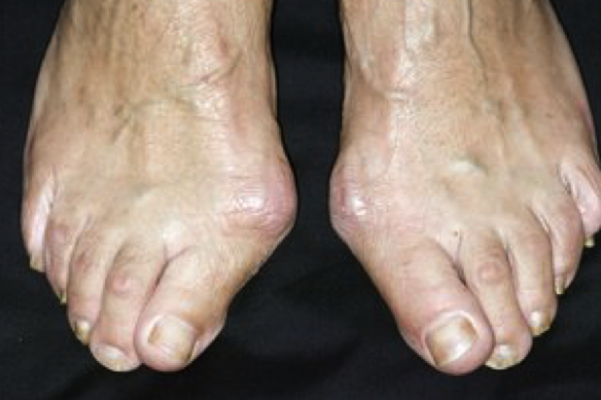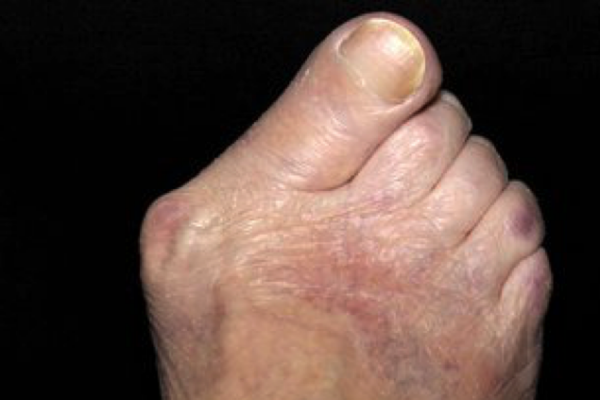What is a bunion?
A bunion is a bony bump that forms on the joint at the base of your big toe. It forms when your big toe pushes against your next toe, forcing the joint of your big toe to get bigger and stick out. The skin over the bunion might be red and sore.
Wearing tight, narrow shoes may cause bunions or certainly make them worse.
However, most bunions develop as a result of an inherited structural defect or a medical condition such as arthritis.
Symptoms
The signs and symptoms of a bunion include
A bulging bump on the outside of the base of your big toe
Swelling, redness or soreness around your big toe joint
Corns or hard skin— these often develop where the first and second toes overlap
Persistent or intermittent pain
Restricted movement of your big toe

Although they don’t always cause problems, bunions are permanent unless surgically corrected. Possible complications include:
- This painful condition occurs when the small fluid-filled pads (bursae) that cushion bones, tendons and muscles near your joints become inflamed.
- An abnormal bend that occurs in the middle joint of a toe, usually the toe next to your big toe, can cause pain and pressure.
- This condition causes pain and inflammation in the ball of your foot.
Treatment
Non surgical
- Changing your shoes- Wear comfortable shoes that allow plenty of room for your toes.
- Padding and taping or splinting- Use bunion pads or the podiatrist can help you tape your foot in a good position to help reduce any pain.
- Anti-inflammatory tablets- can help you control the pain of a bunion. Cortisone injections also might help.
- Shoe inserts- Over-the-counter arch supports can provide relief for some people or better still consult a podiatrist and get one made for you.
- Ice- Ice is always an effective painkiller and relieves swelling and inflammation.
- Try losing weight
Surgical Treatment
If conservative treatment does not provide sufficient relief from your symptoms, you may consider surgery.
Surgery is not recommended unless a bunion causes you frequent pain or interferes with your daily activities as it is not a simple operation and does not guarantee success.
There are various different procedures for surgery which may involve:
- Removing the swollen tissue from around your big toe joint
- Straightening your big toe by removing part of the bone
- Realigning the long bone between the back part of your foot and your big toe to help correct the angle.
- Joining the bones of your affected joint permanently
After surgery
- It is very important to stay off your feet as much as possible for at least 2 weeks
- Avoid driving for 6 -8 weeks
- Stay off work for 6- 12 weeks
- Avoid sports for up to 6 months
- Be aware that after surgery your toes might be weaker or stiffer than before and may also not look totally straight. You will need to find some comfortable wide shoes to wear for a while after surgery. You may need to also buy wider shoes for the future to prevent any further pain.
Talk to your surgeon about what you can expect after bunion surgery and whether you are a candidate and if not, what other treatment can be done.
Ask him the full protocol of rehabilitation after the surgery and be sure you are happy with it before you go ahead.
It is best to think out clearly what the best time of year is for you to keep your foot up.
Bunion Friendly Shoe Suggestions
1. Gabor 63.700.46. Lanzarote. The high coverage over the big toe joint area, with smooth linings, help to reduce friction or ‘rubbing’ of the upper on toe joint. …
2. Clarks 1283-74D. Un Loop.
3. Remonte R3427-90. Liviola. …
4. Legero 00595-80. Tino Gor-Tex. …
5. ECCO 218523-01375. Soft 5 Sandal.

